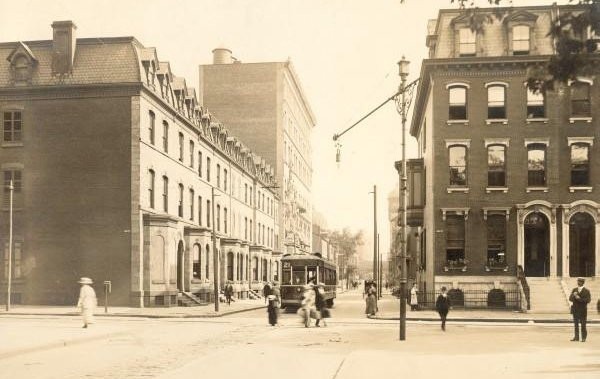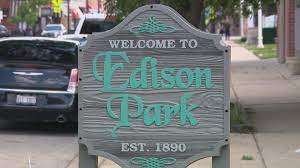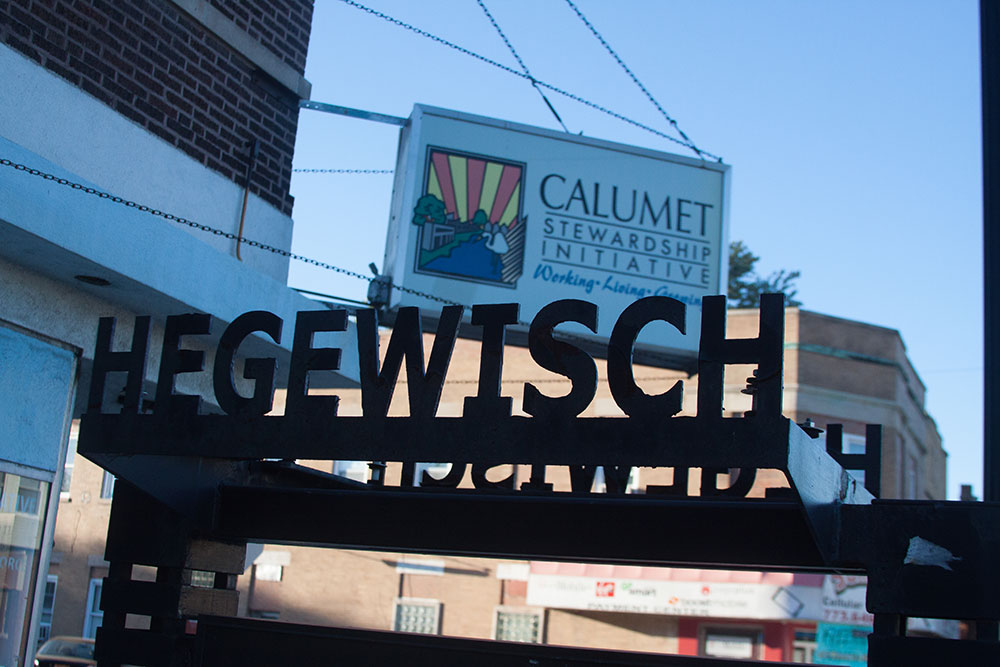
The Logan Square area of the City of Chicago is a designated community area for planning purposes, consisting of a historical neighborhood and a public square at the intersection of Milwaukee Avenue, Logan Boulevard and Kedzie Boulevard. It is generally bounded by the Metra/Milwaukee District North Line railroad on the west, the North Branch of the Chicago River on the east, Diversey Parkway on the north, and the 606 (formerly Bloomingdale Line) on the south. This area is known for its prominent boulevards, stunning greystones, and generous bungalow-style homes.
Logan Square in Chicago is named for General John A. Logan and is home to the Illinois Centennial Monument, a 70-foot (25-meter) tall Doric column designed by Henry Bacon, the same architect of the Lincoln Memorial, and sculpted by Evelyn Beatrice Longman. The square was designed by architect William Le Baron Jenney, landscape architect Jens Jensen, and others, and serves as the grand northwest terminus of the Chicago Boulevard System and the junction of Kedzie and Logan Boulevards and Milwaukee Avenue. Reliefs surrounding the monument’s base portray Native Americans, explorers, Jesuit missionaries, farmers, and laborers, symbolizing Illinois’ contributions to the nation through transportation, education, commerce, grain and commodities, religion and exploration, and the “pioneering spirit” during the state’s first century. The monument was funded by the Benjamin Ferguson Fund.

The area now known as Logan Square was initially developed by early settlers such as Martin Kimbell in the 1830s, and it was annexed into Chicago in 1889. The majority of its inhabitants were of English or Scandinavian descent, namely Norwegians and Danes, with a considerable Polish and Jewish population. Milwaukee Avenue, a major cultural and commercial artery, was originally a Native American trail before it was constructed as the Northwest Plank Road in 1849. In 1892, a streetcar line was extended along Milwaukee Avenue and in 1895, the Blue Line was built alongside, leading to a surge in new building construction. Milwaukee Avenue was paved in 1911 to accommodate motor cars, and the Logan Square Baseball Club played at the corner of Milwaukee and Diversey, even beating both the Chicago Cubs and White Sox , who had played against each other in the 1906 World Series.
The neighborhood is a multicultural hub, with a strong Latino presence (most notably Mexican, Puerto Rican, and Cuban), an Eastern European contingent (mainly Poles), and a growing populace of Millennials seeking the charms of gentrification. Furthermore, the cost of housing in nearby Wicker Park, Lincoln Park, and other lakefront communities has caused many of Chicago’s creative types to make Logan Square their home. The area’s parks, part of the 26-mile Chicago park and boulevard system, have been declared a National Historic Place, and other developments like the Comfort Station at Logan Square, Palmer Square Park, the Bloomingdale Trail, Logan Plaza, The Green Exchange, and the Chicago Printed String Building have been erected alongside the preservation of many historic buildings.

Located in the north-central section of Chicago, the Logan Square neighborhood is bounded by Kimball Avenue on the west, California Avenue to the east, Diversey Parkway to the north, and Fullerton Avenue to the south. As the area of Maplewood has become less remembered, the eastern boundary has moved past the North Branch of the Chicago River and the northern boundary beyond Diversey Avenue. This area is characterized by its large historical boulevards and bungalow-style housing. Formerly, Logan Square was a popular destination for immigrants and working-class individuals due to the affordable rent and housing options. The Norwegian-American cultural center, Chicago Norske Klub, was once situated along the historic boulevards, and many luxurious houses and mansions still line the area today. Norwegian Lutheran Memorial Church (Minnekirken) is also located on Kedzie Boulevard in Logan Square.

